- Office Hours
- Student Documentation
- Deliverables
- Assignments
- Weekly Syllabus [ITP]
- Class 1, January 24: Hi!
- Class 2, January 31: Making Things Move
- Class 3, February 7: Capturing with Capacitors
- Class 4, February 14: Big Kinetic
- Class 5, February 21: Kinetic Presentations
- Class 6, February 28: Let there be…
- Class 7, March 7: Batteries
- [ Break ]
- Class 8, March 21: Solar 2
- Class 9, March 28: Solar Presentations
- Class 10, April 4: Measurement
- Class 11, April 11: AMA
- Class 12, April 18: Special topics
- Class 13, April 25: Final Workshop and/or final presentations round 1
- Class 14, May 2: Final Presentations round 2
Office Hours
This is my online office hour calendar.
Student Documentation
Please post links to your class documentation in this shared spreadsheet (NYU access required).
Deliverables
Kinetic Project: week 5 February 21.
Solar project: week 9, March 28.
Measurement project: written assignment posted Week 12 April 18th.
Final project: Depending on the number of projects (based on groups vs. individual work), we may review final projects over two weeks. Week 13 (April 25) and Week 14, May 2; or only in week 14.
Additional week-by-week prompts and readings will be in the syllabus below and should be responded to on your documentation site.
Assignments
The work of the class will consist of three smaller multi-week exercises (kinetic, solar, and measurement) and a final project. Additional weekly prompts and suggested readings may be mentioned in class and noted in the syllabus.
The final can be an extension of one of the three exercises; a novel project in its own right; or the thorough application of class ideas to another course’s final project or your thesis.
Kinetic project
Turn motion into light
Any relative motion between magnets and conductors will induce electrical current in the conductor. Thus electrical motors are also electrical generators, and you can use this fact to easily power things with motion. A relatively forgiving thing to power is an LED.
The kinetic project is to turn motion into light. Play around with a few alternatives for generators (say, stepper vs DC gearmotor). What is the open circuit voltage and short circuit current of your generator? Is the output AC or DC? Consider various forms of physical input (say, hand crank vs. foot pedal). How hard is it to turn? What physical activity is the input, and what human muscles or other motion does it capture?
Condition the output of your generator to safely power (at a minimum) a light, which could be a single bulb (of any type) or a more complex display. Consider the efficiency of the light source in lumens per watt.
Work in groups of 2 to 3. Document your project in detail, with measurements, and formally present the project in Week 5, February 21.
Solar project
Turn light into computation
Almost all energy we use comes ultimately from the sun, so it is appropriate to focus on solar power in an energy class. Usually when people say “solar” they mean photovoltaics – the conversion of light into electricity via special materials (as distinct from solar thermal, which captures the heat from the sun, sometimes with concentrating mirrors; solar lighting directs sunlight into interior parts of buildings with mirrors or fiber-optics, etc.).
For this assignment, you will use photovoltaic material to convert light into electricity, which you may use directly or store in a capacitor or battery. Building on the kinetic project, we increase the complexity of the goal by requiring that the light-derived electricity power computation of some kind. This could be simple – an ATTiny can be run directly off a small solar panel – or more complex, like a single board computer or larger item. The non-digital “computations” of things like BEAM robots count here for computation. You will need to size your solar and storage (if you use it) accordingly.
Creating solar projects can be expensive, and testing them can be difficult. ITP has a few resources for helping with PV projects and testing, and you will be rewarded with a better understand of a key technology transforming energy around the world.
Work individually or in groups of up to three. Presented in class in Week 9, March 28.
Measurement project
Manage what you measure
Measuring energy gives you insight into the process you are measuring, requires you to keep units straight (power vs energy; watt-hours vs watts, etc) and is helpful in comparing various processes in energy terms.
In the spirit of the class, this assignment combines the personal/local with the communal/global. For a subject you are interested in, combine direct measurements that you can make with related contextual statistics you find through research.
For example, if your interest broadly is food waste, you might measure both how much food you purchase in a week (in Calories), how much you dispose of (estimate as percentage of purchased), and the energy you use to refrigerate it (in kilowatt hours, measured by something like a Kill-A-Watt). You could compare this to food waste statistics at the city, state, country, and/or global levels, as well as fossil fuel inputs to industrial agriculture.
See the notes on measurement materials for some ideas on how to perform direct energy measurements. Make at least two direct measurements, and find at least two contextual statistics. Write up your findings in a blog post.
You should select an area of interest by week 4, when we will discuss your selection in class. We will not set aside a day to present measurement projects; however, you will be expected to share your findings and contribute to class discussions on your topic of interest throughout the semester. The written post is due by week 12, April 18.
Final
Extend the kinetic, solar, or measurement project into a larger final project (recommended), or develop a new project.
As every subject can be viewed through the lens of energy, there are no subjects that are intrinsically off-limits for an energy final. A good Energy class project does one or more of the following:
- Accounts for the energy used accurately, with appropriate estimates and direct measurements when possible.
- Is itself about energy, clarifying energy concepts or illuminating energy use.
- Obtains all of its energy from the environment, without need for primary batteries or a grid connection.
- Makes a positive difference in the world!
Participation
Your engaged participation in class (both listening and speaking) is extremely important. The class works best if you actively work to get information out of me! A distant second best is if you passively receive information I present. And worst of all is not receiving the information at all by missing the class, arriving late, or not paying attention. (Tip – this is true of most classes.)
If you have any issues and can’t join class meetings, please let me know before the class so I can plan accordingly. Two or more unexcused absences is grounds for failure. Chronic lateness or early departure will also affect your grade.
A note on Zoom: A hybrid class is, at best, a suboptimal experience for the remote participants. I want to avoid using zoom during our class sessions whenever possible in favor of in person meetings. However, in cases where students have a contagious illness and cannot come to class, I will allow them to join via zoom. Other reasons (hung over, traveling for work, attending a wedding, etc…) are not cause for Zoom.
Grading
The most important thing you can do is arrive to each class on time and be prepared to actively participate and engage with the material. Two or more unexcused absences will result in failing the class. Excessive lateness is considered an absence. Please put your best effort into assignments and readings, and keep a record of your work online. ITP is pass fail, but the equivalent of a B or higher is required to pass.
- 20% In-class work and participation, readings, discussions.
- 10% Documentation
- 15% Kinetic project
- 15% Solar project
- 10% Measurement project
- 30% Final project
Weekly Syllabus [ITP]
Class 1, January 24: Hi!
Introductions – who are you, who am I? Origin, purpose and organization of the class. Blackout stories.
In class: Jump!
Read: This syllabus! Actually – don’t read every word, but scan over it to learn what lives where. Look over our schedule, the projects and deliverables, and the resources for readings, materials, measurement techniques etc. What are you particularly interested in? Anything you expected to see that you don’t?
Read/Listen: The first half of this September 2022 interview between Ezra Klein and Jesse Jenkins of the Princeton ZERO Lab. [ Podcast | transcript ]. Listen to the ad break (around minute 45) or read to the text “[MUSIC PLAYING]”.
For next week:
- Add documentation link to class spreadsheet.
- Complete the brief intake form covering your interest and experience.
- Post two questions about the syllabus or the podcast to your blog. What are you particularly interested in? Anything you expected to see that you don’t?
- Get the Smil text.
- Find a DC motor to add to the kinetic parts. At a minimum, use the one from the Physical Computing kit. Alternately, find any other DC motor with a gearbox. As a general rule, about fist sized is good, and you should be able to turn the shaft by hand or with pliers.
- Bring to class next week: multimeter, breadboard, DC gearmotor – you’ll receive more kinetic parts from me next week!
- Begin to brainstorm what kind of motion you can capture for your kinetic project.
Presentation Materials:
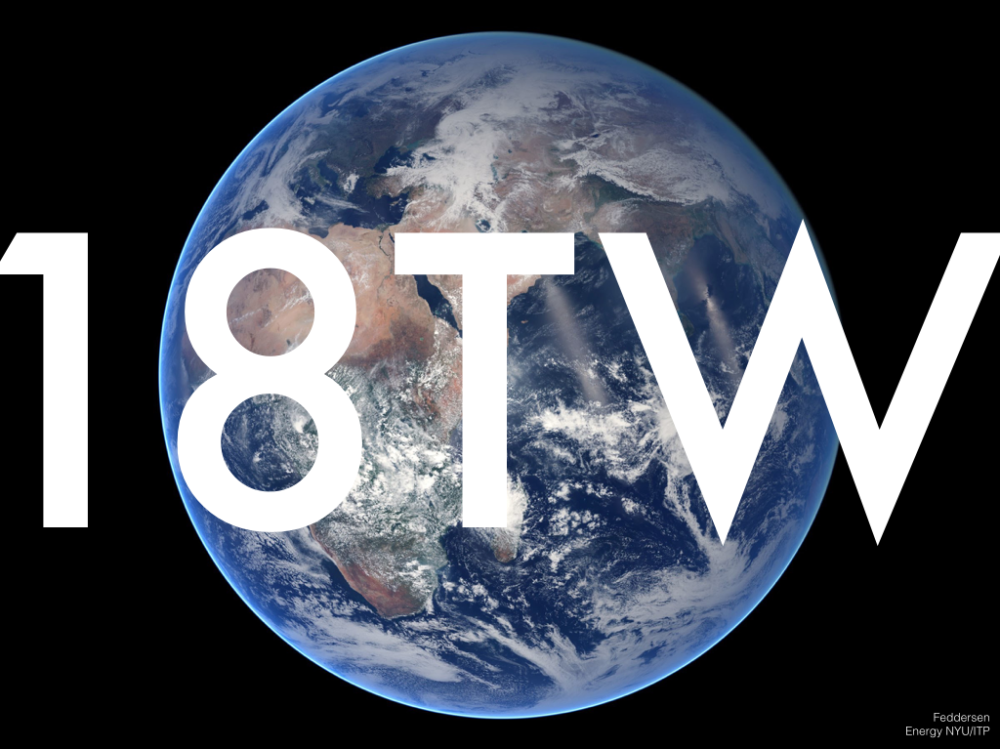
This video is a sort of overview of all the steps necessary for a basic kinetic->electricity->light activity. More notes on Vimeo.
Class 2, January 31: Making Things Move
Kinetic energy, and a 15 minute history of energy since the beginning of the universe.
In class: Discuss Klein/Jenkins interview. Kinetic energy introduction. Hands-on with the parts from the kinetic kit. Short circuit current, open circuit voltage. Entire history of energy. Kinetic technical material.
Read:
- “Energy Scavenging for Mobile and Wireless Electronics” by Paradiso and Starner of MIT. Not recent, but an excellent overview of all the ways we might power electronic devices with ambient power harnessed from the environment. Link is below.
- Stuart McMillen’s illustrated essay about energy in terms of the human body. This idea traces back to Buckminster Fuller, and is probably the basis for Chu’s concept of energy servants mentioned in the lecture. Note: this work uses the image of ‘energy slaves’ as a central metaphor for making this comparison.

Several additional written essays by McMillen discussing the work and the ideas behind it are great optional resources for additional material. Thanks go to Todd Whitney from Energy 2021 for finding this excellent resource.
For next week:
- Consider how to condition the output of your generator. Do you need to rectify AC? Smooth the output? Store energy? Limit voltage? Identify what parts your particular application will need.
- Sketch a concept for your kinetic project and post to your blog. Identify components you need that you will order or make.
Presentation Materials:
Note – I’m front-loading a lot of material here. We won’t get to all of it in this class but we will cover this material over the next several weeks.
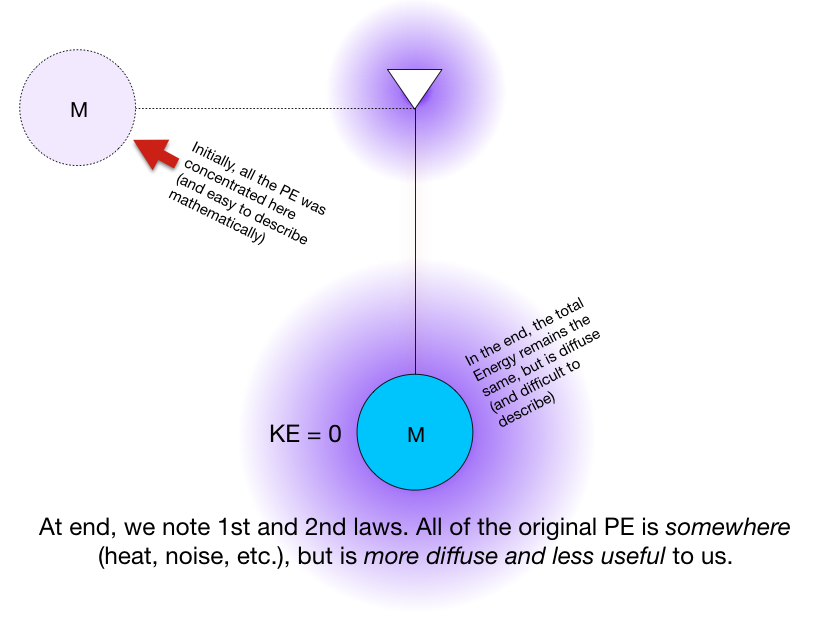
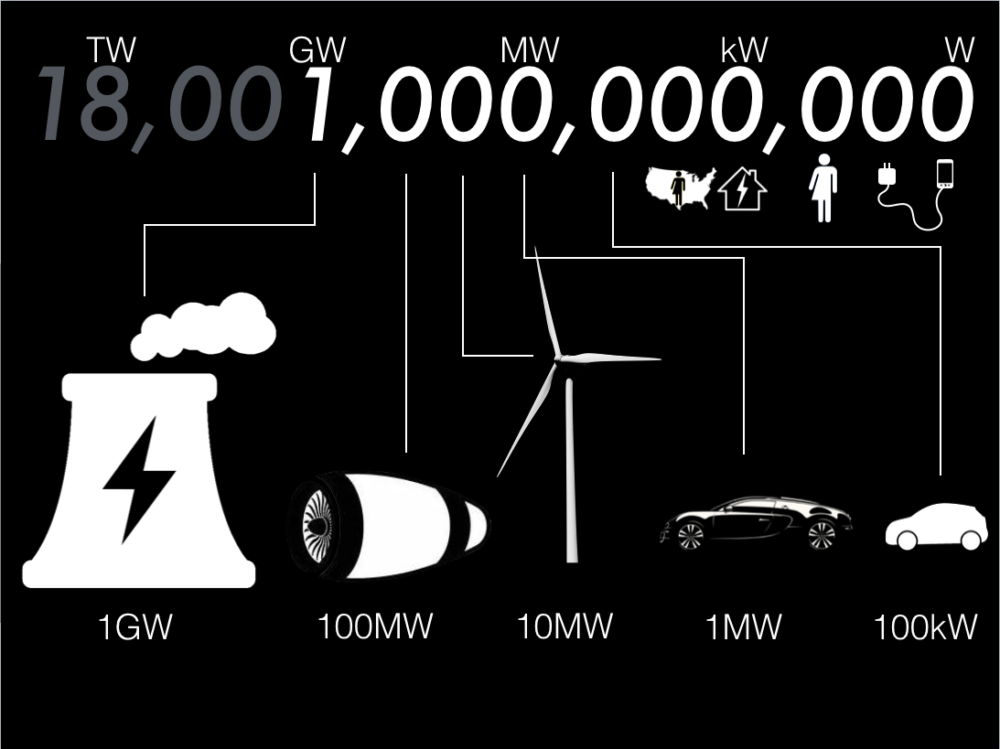
Check out Mathura’s documentation of a great kinetic-electrical car (from 2016). So many LEDs!
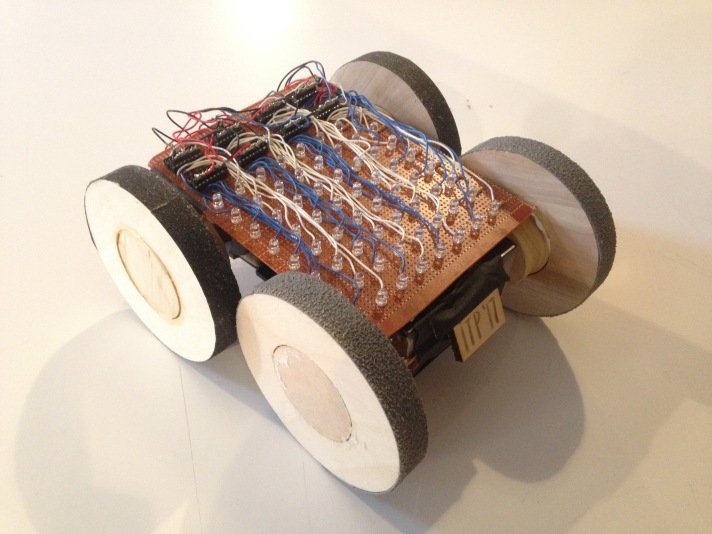
See also – Daniel Ryan Johnston’s tear down of a shower head that lights up from the motion of water.
Rectification circuit – where we’re headed by next week.
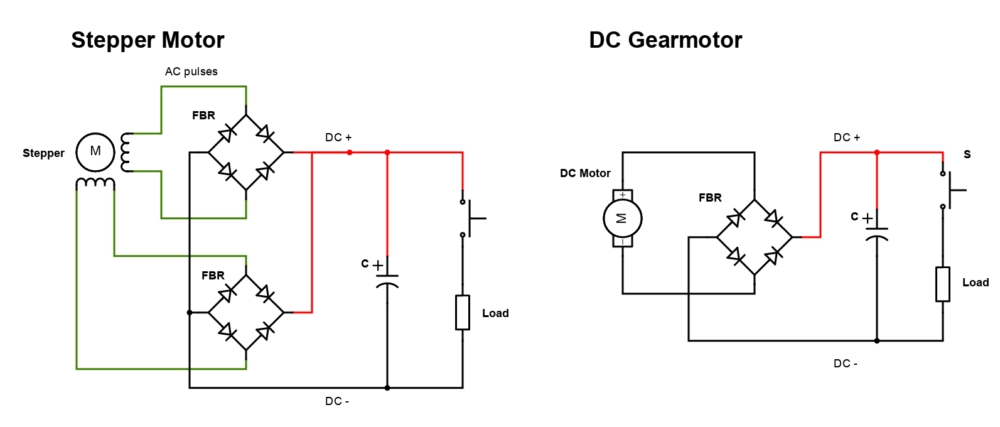
Here’s the circuit again as a vector PDF:
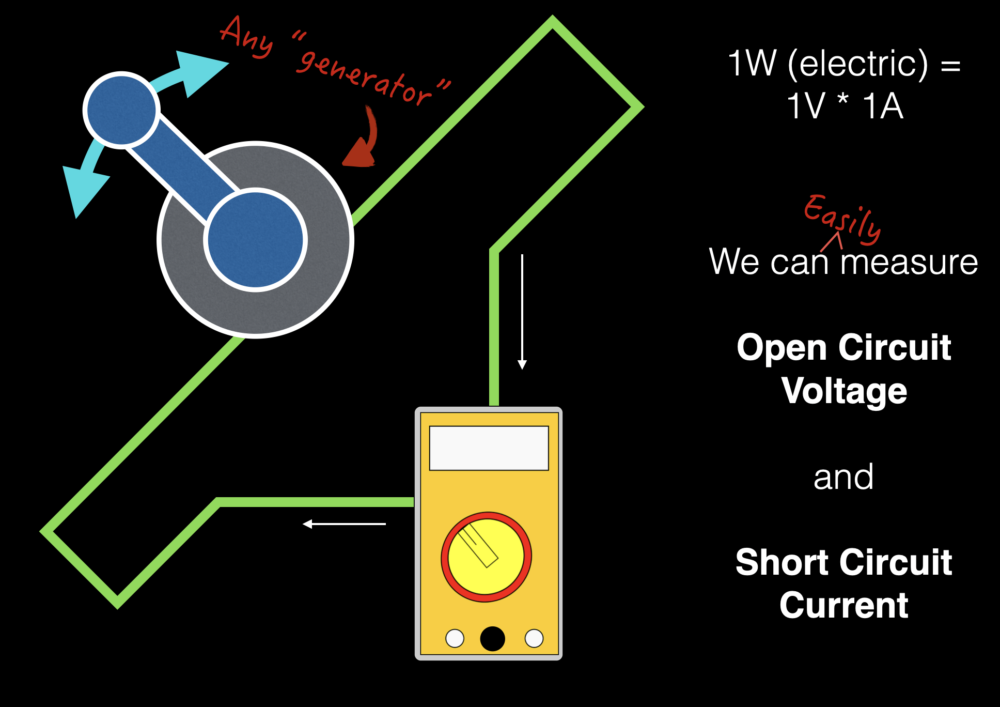
Class 3, February 7: Capturing with Capacitors
We’ll look at a familiar component, the capacitor, in sizes (~1 Farad, or more) where they begin to function as energy storage devices.
In class:
- Discuss McMillen
- Activity:
- Finish rectifiers
- add capacitors
- Technical:
- Rectification and capacitor storage
- Big Picture:
- Orders of Magnitude 1, Koomey’s Law
- Chu’s Energy Servants/Fuller’s Energy Slaves
For next class:
Continue KE for presentation in two weeks (week 5)
Select Measurement research area, to discuss next week (week 4)
Look at solar resources in prep for Solar project (starting in week 5)
See these Hackaday notes on Rectifiers.
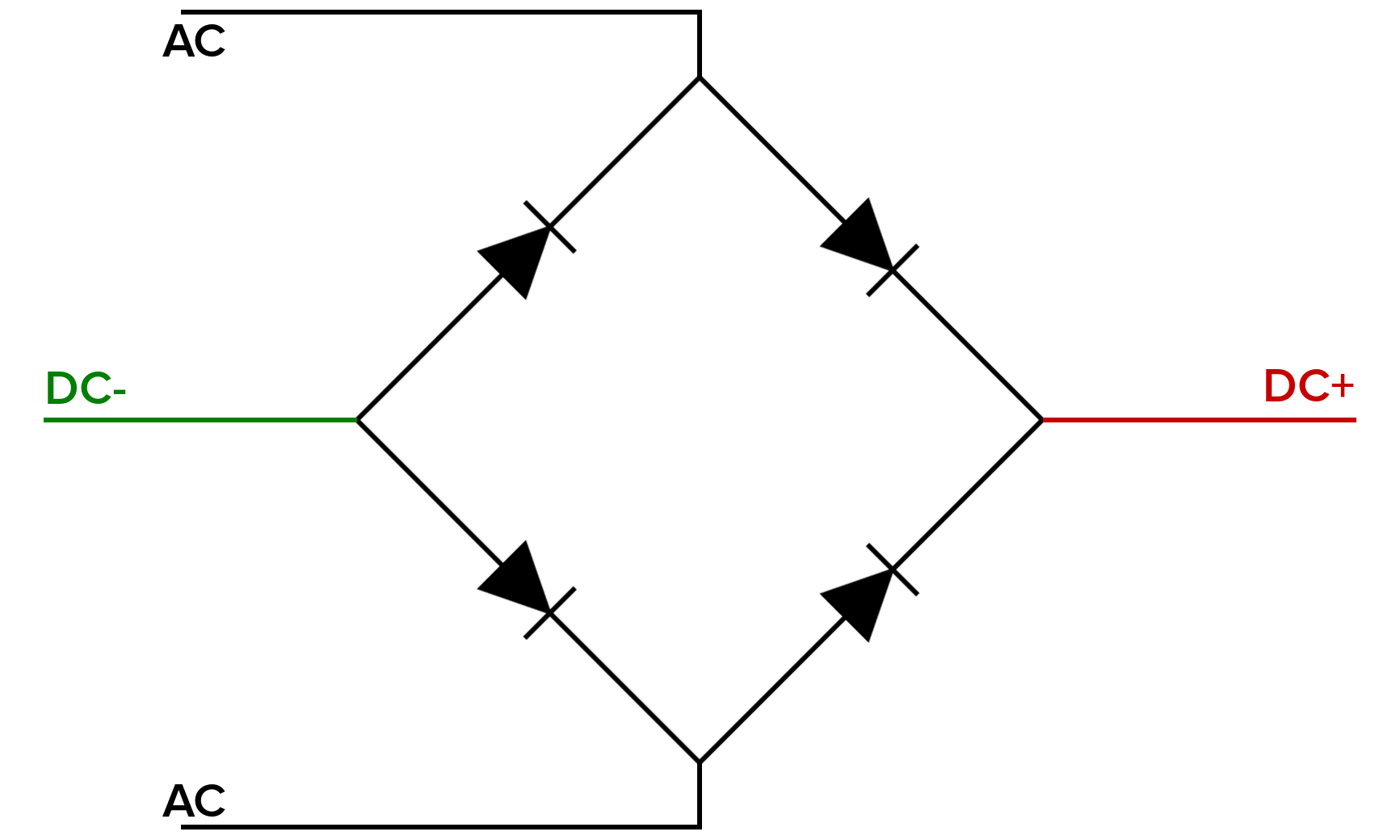
For next week:
- Read Smil chapter 1 & 2
- Finalize kinetic mechanism and circuit, begin final fabrication.
Presentation Materials:
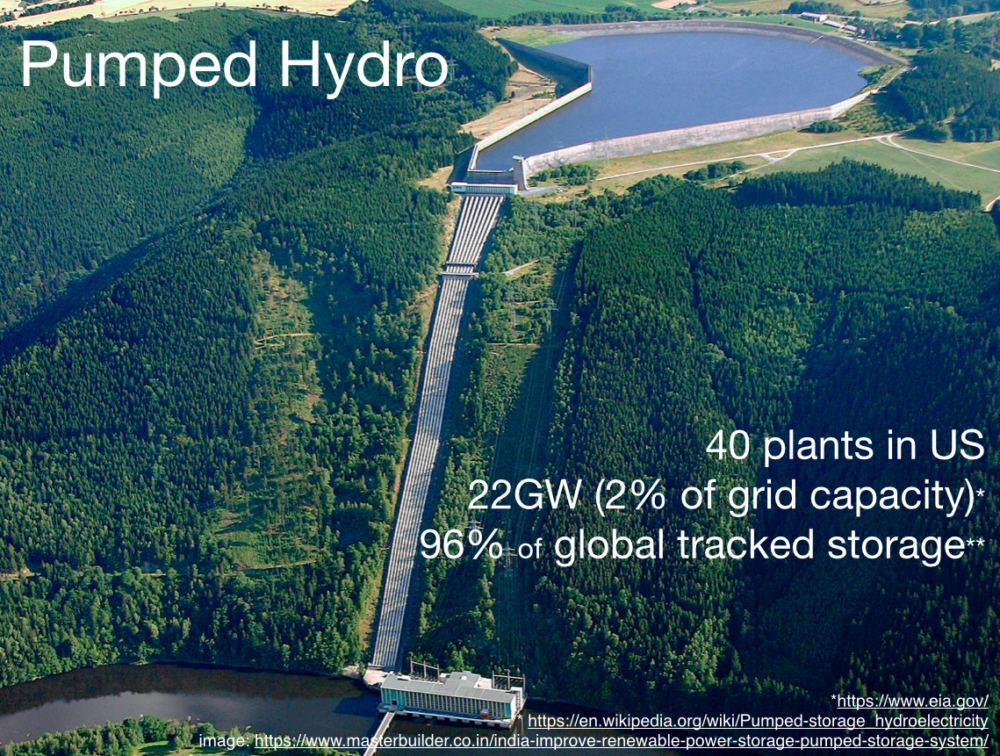
For further reading/watching (as we won’t be able to cover all this in class:)
Class 4, February 14: Big Kinetic
Grid-scale kinetic energy devices, kinetic art examples.
In class: Project check-in. Grid scale kinetic energy. DC-DC converters.
See previous Energy student Jason Gao’s excellent Solar-oid project for an example of a DC-DC converter in use. (Also, great energy estimation and use of small solar for a microcontroller).
Data:
Map of US electrical resources
BP Statistical Review (annual, comprehensive, global energy stats)
For next week:
- Read Smil Chapter 3. This chapter is about muscles, tools, and machines. Note connections to your kinetic projects.
- Finish Kinetic Projects
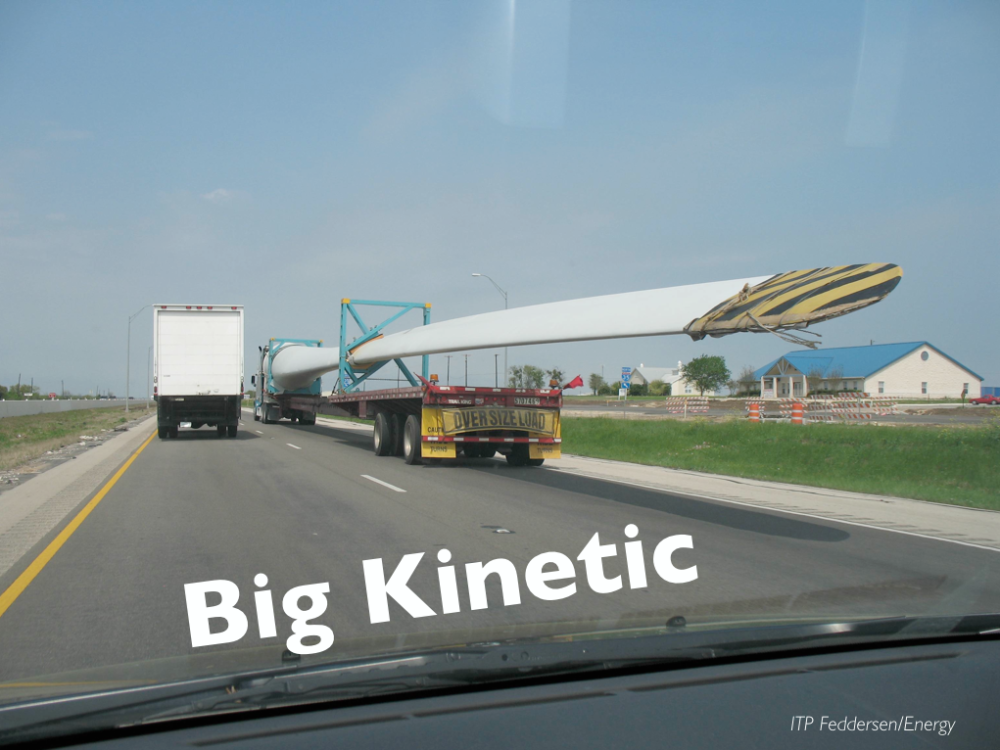
Class 5, February 21: Kinetic Presentations
We see what you made!
In class: Present Kinetic Projects
For next week:
- Smil Chapter 4
- Review the work of Trash Club, in particular the projects, readings, resources.
- Solar mini assignment (new): Measure the power required to run a microcontroller. Take any project you already have, and using your multimeter, measure the current needed to power the project. As you already know the voltage, you can determine the power (V*I). If your microcontroller does different things, like turn on and off an LED, or connect to a wifi network and send a message, make sure to measure the curent required for each stage. Record your results on your blog.
Class 6, February 28: Let there be…
Converting light into electricity
In class:
Discuss measurement mini-assignment- Additional ways to directly measure energy.
- Hands on with equipment in solar cart
- Solar introduction.
For reference: See Brandon Roots’ very interesting measurement project (jailbreaking widely available inexpensive wifi power monitors), as well as his beautiful solar project (generative art on an e-ink display that reacts to the sun).
For next week:
- Smil chapter 5
- MVP: Using the solar cart and ITP’s panels, try powering a microcontroller the simplest possible way, by attaching the panel to the V-in (before the regulator). Does it work? If so, why? If not, why?
- Identify the materials you think you will need for your solar project – panels, computational load, battery and charge controller (if using), any additional components. Post your BOM (bill of materials) to your blog. Have a plan for getting anything that may have a long lead time.
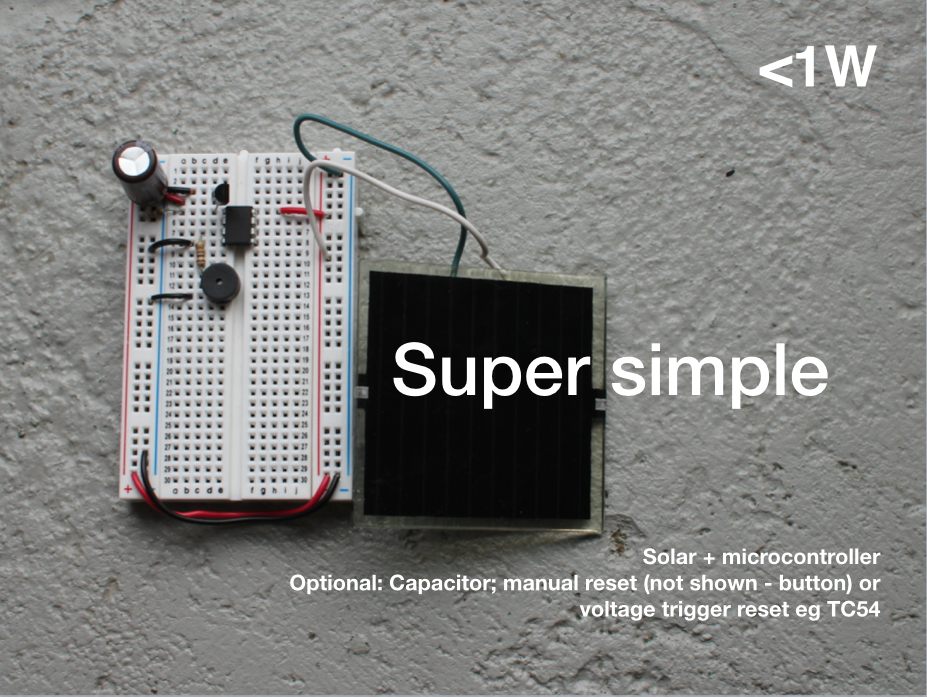
Class 7, March 7: Batteries
Storing energy in batteries
In class:
- More hands-on with solar cart materials.
- Battery scavenger hunt.
- Battery slides, notes on C-Rate.
For next week:
- Continue developing Solar projects. As soon as possible, test your projects with light from the cart or outdoors. If using a battery, prove to yourself that your project is not just running off the battery, but is also capturing solar energy. Consider ways to minimize your power requirements and gracefully handle power interruptions.
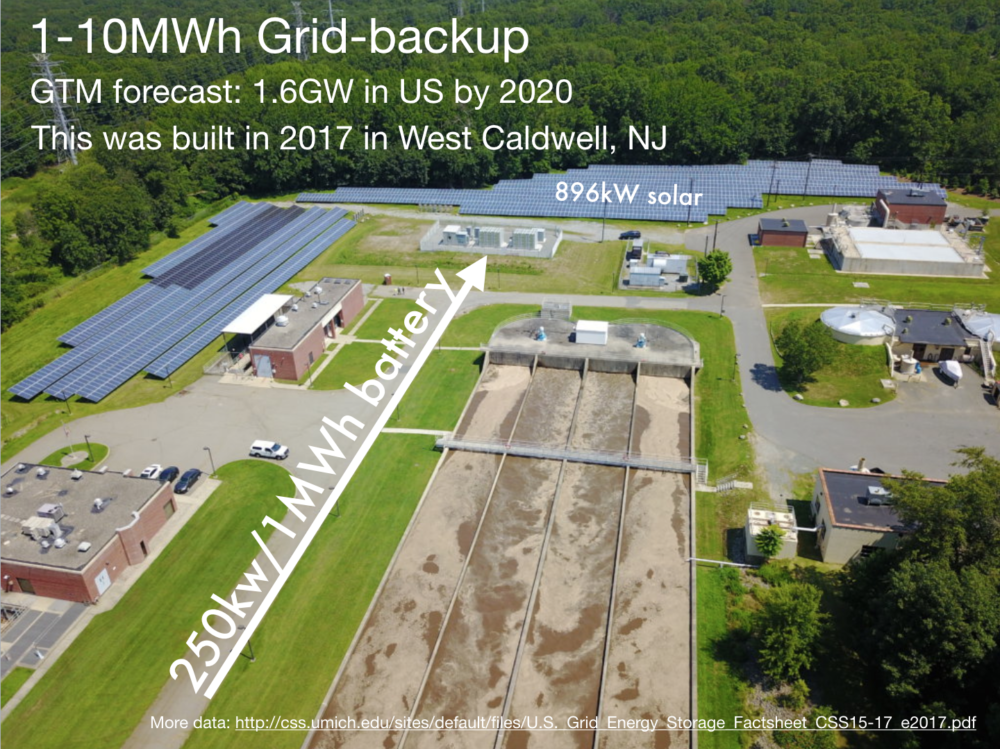
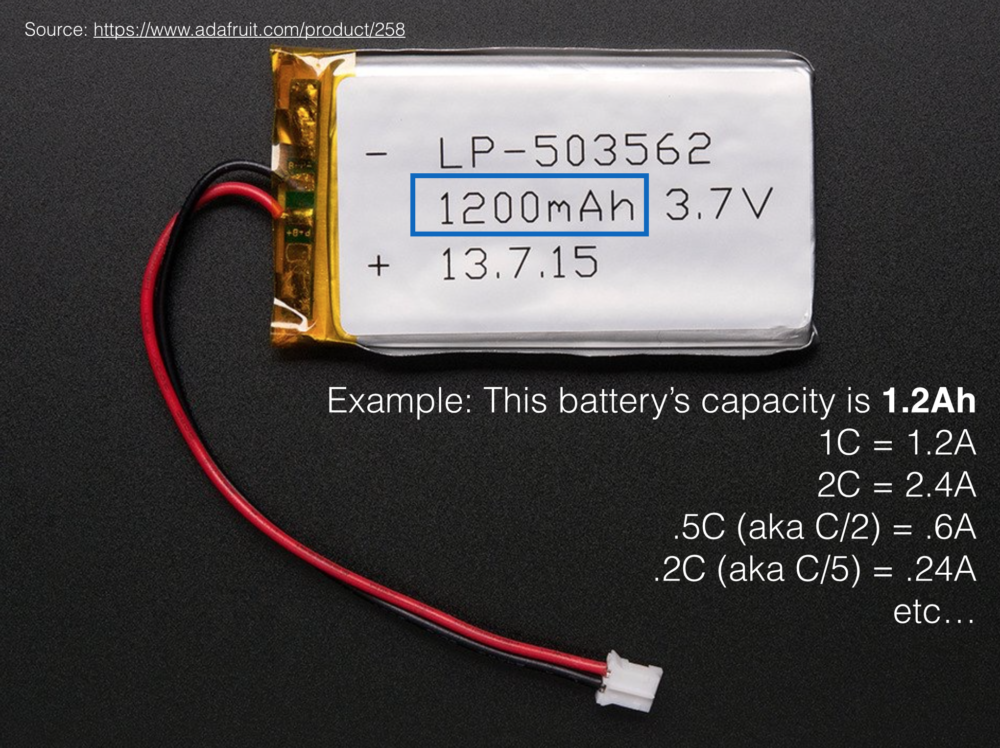
[ Break ]
Class 8, March 21: Solar 2
Advanced solar topics
In class:
We’ll look at additional solar concepts like maximizers, module-level power electronics, balance of system, 1- and 2-axis tracking systems, concentrators, and alternate materials including multi-junction cells and Perovskites.
Guest: Sam Calisch, prolific inventor, collaborator at Other Labs and Rewiring America, co-founder of Channing Copper, a company integrating battery storage into electrical appliances.
For next week:
- Finish and document your solar projects.
- Read the Arduino Low Power Design Guide.
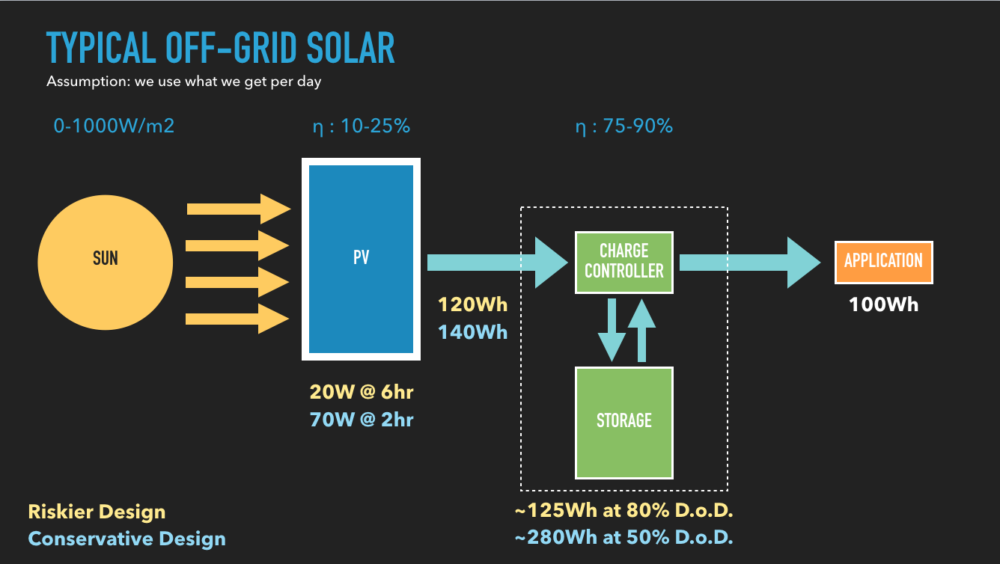
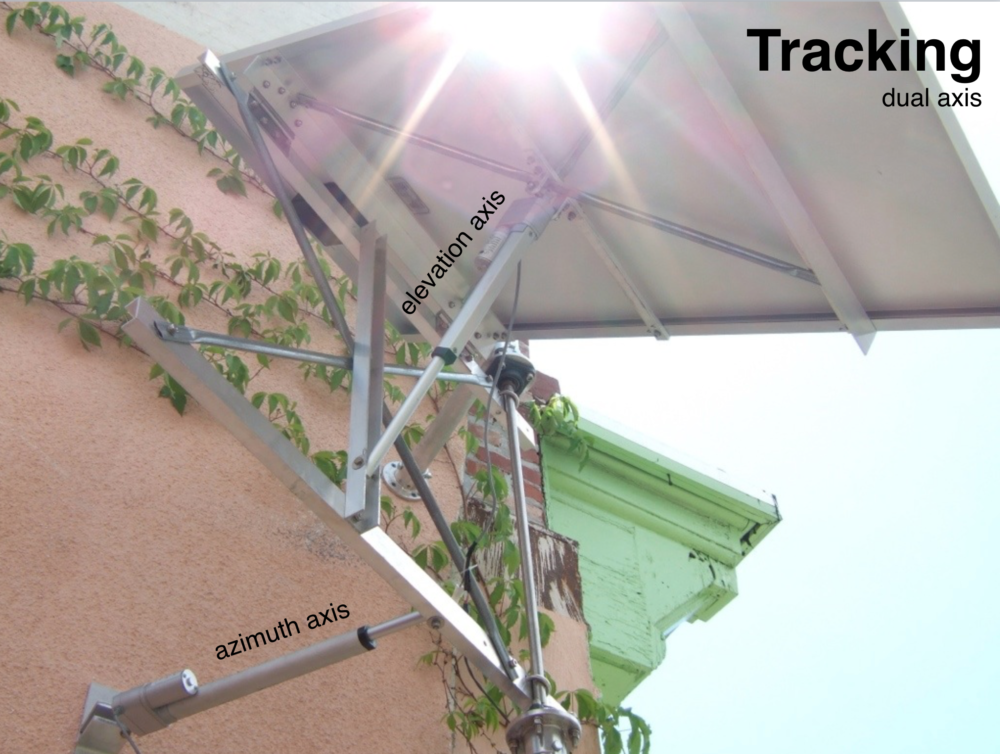
Class 9, March 28: Solar Presentations
We’ll see what you made.
In class: Solar Presentations
For next class:
- Post to your blog a one paragraph update on your measurement project. Detail one or more of the following: a direct measurement you’ve made; a journal, paper, or data source you’ve identified; a statistic that applies to your subject that you’ve learned through research.
- Finish Reading Smil!